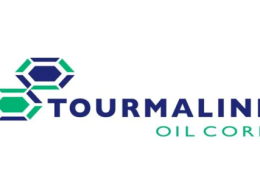by The editor's desk, AGF Management Ltd.
Members of AGF’s North American equity research team give their perspective on various sectors of the market in the latest COVID-19 crisis roundup.
Richard Fisher, Equity Analyst, AGF Investments Inc.
North American banks are in much better shape to weather the storm of the ongoing COVID-19 pandemic than they were to handle the Great Financial Crisis. They are much better capitalized than a decade ago with the Canadian banks now having three times more capital than was the case in 2008-09. Regulators and central banks, meanwhile, have provided numerous relief actions to ensure banks continue to make loans available to individuals and small businesses. In turn, the banks have been deferring mortgage payments and substantially lowering credit card interest rates for those affected. They have also begun to facilitate the various federal government loan programs to assist small businesses and their employees. While credit losses are expected, especially on loans made to industries most at risk of social distancing, and bank margins and revenue will be challenged, we believe that North American bank balance sheets should stay relatively stable and that dividend cuts by them are very unlikely.
Carmen Tang, Equity Analyst, AGF Investments Inc.
Many sell-side analysts assume that the economic environment will improve in the third quarter of 2020 and things will return to “pre-coronavirus” level in the fourth quarter, but a second wave of the pandemic in the fall remains a high probability. While the U.S. is expected to gradually open up its economy, the new normal may be subdued economic activity. Within the healthcare sector, biotech and pharmaceuticals stocks have been the most resilient, while medical device companies that are levered to elective surgeries, clinical research organizations and acute care hospitals have been the most impacted. Telemedicine, meanwhile, has emerged as the winner in healthcare. As patients try to avoid going to clinics, usage of telemedicine has increased substantially in recent weeks. If individuals have a positive experience with telehealth, some of them will likely become long-term users.
Auritro Kundu, Equity Analyst, AGF Investments Inc.
Social distancing has forced people to seek out new ways to connect, boosting the adoption of several Video Chat services that allow us to work and learn from home. When companies to return to work, hopefully in the second half of this year, they will be forced to re-think their “work from home” infrastructure. Before the COVID-19 outbreak, only 7% of workers in the U.S. had access to “flexible workplace” benefits, according to the Pew Research Center. Studies have shown that businesses using video conferencing actively can reduce travel expenses by 30%. Reducing commute time and work-life balance could mean remote work is here to stay and, as companies become comfortable with this potential reality, it could mark the beginning of a solution to social inequality issues such as expensive real estate which have become more prevalent in cities like San Francisco in recent years.
John Kratochwil, Equity Analyst, AGF Investments Inc.
Gold is typically thought of as a safety instrument in times of market uncertainty and during geopolitical events. But investors need to remember that gold is also used as a hedge against inflation. With sharp declines in the oil price and a slowdown in consumer spending due to quarantine efforts, we are currently in a deflationary environment, which is negative for gold. The net result is a balance between deflationary pressures and market uncertainty. While it’s true that gold and gold have not performed as investors have expected on an absolute basis, they have been an outperformer on a relative basis. Since February 19, the S&P 500 is down roughly 20% from its high, but gold is up close to 3%. Gold equities are down approximately 9% over that time period, but is the best performing sub-sector in the market.
Dillon Culhane, Equity Analyst, AGF Investments Inc.
Oil prices fell by two-thirds during the first three months of 2020, however, prices have rebounded by more than 20% over the past week on hopes that Russia and the Organization of Petroleum Exporting Countries (OPEC) reach a supply cut agreement. The notion of 10 million barrels a day (mb/d) in supply cuts from Russia and OPEC alone seems exaggerated, but we could see 5-7 mb/d from them, with other non-OPEC countries potentially contributing to a total cut of 10 mb/d. Any supply deal will pale in comparison to the COVID-19 demand shock estimated at 20 to 30 mb/d currently. Global inventories should build into the summer, putting pressure on oil prices, but a coordinated supply cut would at least limit this build, putting the oil market on better footing coming out of the COVID-19 crisis as demand starts to rebound.
Wai Tong, Equity Analyst, AGF Investments Inc.
The industrials sector has underperformed the broader market with the aerospace and defense sub-index falling roughly 36% year-to-date. Air travel in the United States is down by as much as 90% year-over-year and by some estimates may not to return to 2019 levels until 2023. One U.S. airline recently said that they don’t need to order any new planes until then, which is bad news for all the aircraft original equipment manufacturers (OEMs) and their suppliers. With oil at its current price, there is also less demand for new fuel-efficient planes. We expect most companies will not provide guidance when first quarter earnings season begins in mid-April. And while S&P 500 earnings estimates for 2020 have fallen 8%-10% since the beginning of the year, they may have further to drop given the expectation for U.S. GDP to shrink between 20% and 30% in the second quarter.
The commentaries contained herein are provided as a general source of information based on information available as of April 8, 2020 and should not be considered as investment advice or an offer or solicitations to buy and/or sell securities. Every effort has been made to ensure accuracy in these commentaries at the time of publication, however, accuracy cannot be guaranteed. Investors are expected to obtain professional investment advice.
The views expressed in this blog are those of the author and do not necessarily represent the opinions of AGF, its subsidiaries or any of its affiliated companies, funds or investment strategies.
AGF Investments is a group of wholly owned subsidiaries of AGF and includes AGF Investments Inc., AGF Investments America Inc., AGF Investments LLC, AGF Asset Management (Asia) Limited and AGF International Advisors Company Limited. The term AGF Investments m ay refer to one or m ore of the direct or indirect subsidiaries of AGF or to all of them jointly. This term is used for convenience and does not precisely describe any of the separate companies, each of which manages its own affairs.
™ The ‘AGF’ logo is a trademark of AGF Management Limited and used under licence.
About AGF Management Limited
Founded in 1957, AGF Management Limited (AGF) is an independent and globally diverse asset management firm. AGF brings a disciplined approach to delivering excellence in investment management through its fundamental, quantitative, alternative and high-net-worth businesses focused on providing an exceptional client experience. AGF’s suite of investment solutions extends globally to a wide range of clients, from financial advisors and individual investors to institutional investors including pension plans, corporate plans, sovereign wealth funds and endowments and foundations.
For further information, please visit AGF.com.
© 2020 AGF Management Limited. All rights reserved.
This post was first published at the AGF Perspectives Blog.










